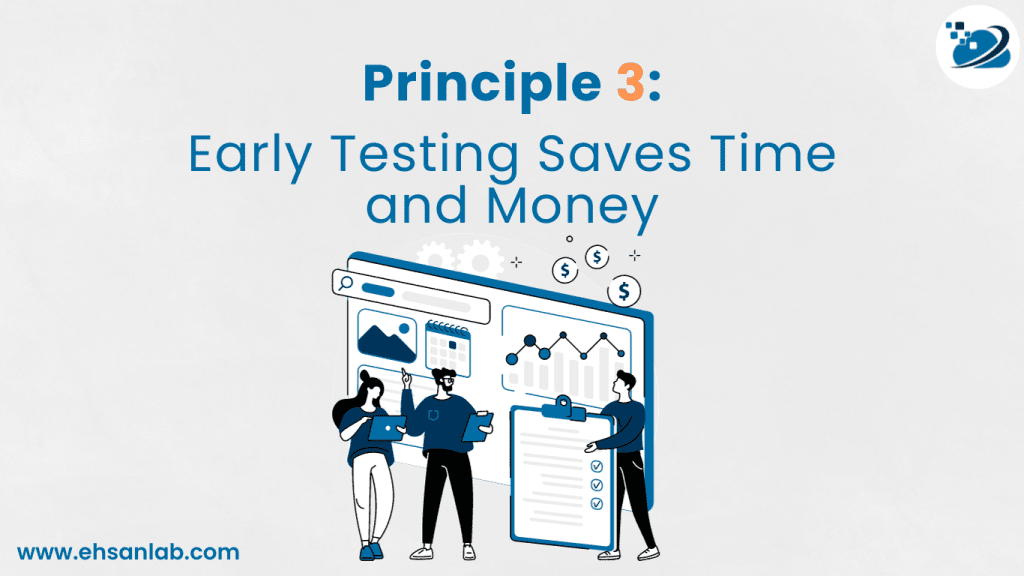
Software testing is crucial for ensuring the quality and functionality of software products. It involves verifying that a software system meets specific requirements and delivers the desired results. To effectively carry out software testing, it’s important to follow fundamental principles that guide testing activities. In this article, we’ll explore these seven principles of software testing and provide practical examples to illustrate their importance.

Principle 1: Testing Shows the Presence of Defects, Not Their Absence
The purpose of testing is not to prove that a software system is entirely defect-free. Instead, it’s about identifying and demonstrating the existence of defects. No matter how extensive the testing, there is always a possibility of undiscovered defects. Testing reduces the risk of failures but doesn’t guarantee a flawless system.
Example: Imagine testing a calculator app that performs basic arithmetic operations. You test the app with various inputs and outputs and find no defects. However, this doesn’t mean the app is flawless. There might be edge cases or scenarios that you did not test, such as dividing by zero or handling large numbers. These cases might reveal defects that you missed during testing.

Principle 2: Exhaustive Testing Is Impossible
Testing every possible input, output, scenario, and combination in a software system is impractical, if not impossible. The number of test cases required for exhaustive testing can be infinite or unmanageable. Instead, testing should prioritize crucial aspects based on factors such as risk, priority, complexity, and user feedback.
Example: Suppose you are testing a website that allows users to book flights. To perform exhaustive testing, you would have to test every possible combination of origin, destination, date, time, airline, class, price, and other options. This would require an enormous amount of time and resources. Instead, you can use techniques such as equivalence partitioning and boundary value analysis to select a representative set of test cases that cover the most relevant and likely scenarios.

Principle 3: Early Testing Saves Time and Money
Starting testing as early as possible in the software development life cycle is cost-effective. It helps identify and rectify defects at an early stage when they are less complicated and costly to resolve. Early testing also fosters communication and collaboration among the development team and stakeholders.
Example: Suppose you are testing an e-commerce website that allows users to buy and sell products. You notice that most defects are found in the payment module, which involves various payment methods, currencies, and transactions. This module is also the most complex and frequently updated part of the website. Therefore, you should allocate more time and resources to test this module, as it poses a higher risk of failure and customer dissatisfaction.

Principle 4: Defects Tend to Cluster
Defects are not evenly distributed across a software system. They often cluster in specific modules, components, or features, typically the most complex, frequently updated, or poorly designed parts. Focusing testing efforts on these areas is crucial as they pose a higher risk of defects and failures.
Example: Suppose you are testing an e-commerce website that allows users to buy and sell products. You notice that most of the defects are found in the payment module, which involves various payment methods, currencies, and transactions. This module is also the most complex and frequently updated part of the website. Therefore, you should allocate more time and resources to test this module, as it poses a higher risk of failure and customer dissatisfaction.

Principle 5: Beware of the Pesticide Paradox
Repeating the same test cases can lead to diminishing returns as it primarily identifies known defects. To overcome this paradox, regular testing should be reviewed and updated with new test cases covering evolving scenarios, requirements, and functionalities.
Example: Imagine testing a social media app that allows users to post, like, and comment on photos. The app is constantly evolving, with new features, updates, and bug fixes. If you keep using the same test cases, you might miss defects that affect the new features or the existing functionalities. Therefore, you should review and revise your test cases to include new scenarios and functionalities.

Principle 6: Testing Is Context-Dependent
Software testing is not a one-size-fits-all activity. It must be tailored to the specific context of the software system, considering its type, domain, purpose, audience, and environment. Different systems require distinct testing approaches, techniques, tools, and standards.
Example: Suppose you are testing a medical device that monitors the heart rate of patients. This system is different from a gaming app that entertains users with fun graphics and sounds. The medical device requires a higher level of reliability, accuracy, and safety, as it can affect the lives of the patients. Therefore, the testing of the medical device should be more rigorous, thorough, and compliant with the relevant regulations and standards.

Principle 7: Absence of Errors Is a Fallacy
A defect-free software system doesn’t guarantee user satisfaction or compliance with requirements. While testing should find and fix defects, it should also ensure the software fulfills specified requirements and user expectations.
Example: A music streaming app may be free of functional defects, but it may lack a user-friendly interface, a comprehensive music library, or have a high subscription fee. These factors impact user satisfaction and loyalty, necessitating additional testing for usability, accessibility, and user feedback.
In conclusion, Understanding and applying the principles of software testing is crucial for testers to improve their skills and deliver high-quality software products that meet user needs and expectations. By following these principles and continuously adapting, testers can contribute to the development of reliable software.

